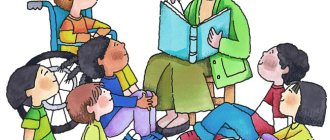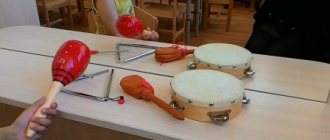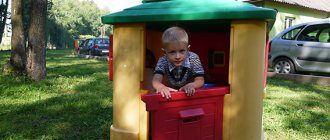Page of the teacher-defectologist
based on materials
Internet resources
MBDOU No. 384
March 1, 2021
We will talk about what knowledge, skills and abilities parents should have in order to ensure that schooling does not cause difficulties for both children and parents. Literacy is the acquisition of the ability to read and write texts. Express your thoughts in writing, understand when reading not only the meaning of individual words and sentences, but also the meaning of the text, that is, mastery of written language. How a child is introduced to literacy largely depends on his success not only in reading and writing, but also in mastering the Russian language as a whole. The complex process of mastering literacy is divided into several stages, most of which occur at school. But in order to make literacy learning at school more successful, it is necessary to develop some of the skills in kindergarten. The main components that are included in the process of learning to read and write: - the formation of the sound side of speech, i.e. the child must have correct, clear pronunciation of sounds of all phonemic groups (whistling, hissing, sonorant); — formation of phonemic processes, i.e. the ability to hear, distinguish and differentiate the sounds of the native language; — readiness for sound analysis and synthesis of speech composition, i.e. isolate the initial vowel from the word; analysis of vowel sounds; hear and identify the first and last consonant sound in a word; - familiarity with the terms: “sound”, “syllable”, “word”, “sentence”, sounds vowels, consonants, hard, soft, voiceless, voiced. - ability to work with the scheme of words and sentences. Everything we say, read, write is speech. Speech can be spoken and written. Our speech consists of sentences. What are offers? Sentences are words related to each other in meaning. Sentences are made up of words. Words are made up of syllables. Syllables are made up of sounds. There are sounds - vowels, consonants. We hear sounds in every word. These sounds are different. Vowel sounds are sounds during the pronunciation of which the air stream comes out freely, neither lips, nor teeth, nor tongue interfere with it, therefore vowel sounds can sing. They sing (voice, shout) and can sing any melody. Vowel sounds are indicated in red. Consonant sounds are sounds during which the air stream encounters an obstacle. It is either her lips, teeth, or tongue that prevent her from coming out freely. Some of them can be drawn (SSS, MMM), but they cannot be sung. Consonant sounds are indicated in blue. Consonant sounds can be soft or hard. For example, in the word “river” you hear a soft consonant sound [r’], and in the word “hand” you hear a hard consonant sound [r]. The softness of a consonant is indicated by adding the symbol ' to its notation, for example: [p']. How to distinguish a soft consonant sound from a hard sound? When pronouncing a soft consonant sound, the tongue rises more to the palate and narrows the passage through which air flows than when pronouncing a hard consonant sound. For example, in the word “break”, when pronouncing the first consonant sound [p'], the air passes through a narrower gap than when pronouncing the second consonant sound [p].
Also, consonant sounds are soft if they are immediately followed by vowels (e, ё, i, yu, ya) or (ь). A soft sign and a hard sign are a letter, not a sound!!! And hard if they are followed by other vowels (a, o, u, y, e). The vowels e, e, yu, i denote two sounds if they are: 1. At the beginning of a word (south, pit, Emelya); 2. After vowels (application, shelter, Pelageya); or can denote one sound after a consonant. 3. After the letters b b (blizzard, entry) Always soft sounds: [th'], [ch'], [sch']. Always hard sounds: [zh], [sh], [ts]. We denote sounds in writing by letters. Parents should know that: - sounds are different from letters. We hear sounds, pronounce them, and write letters; - when showing letters, you need to pronounce not its official alphabetical name, but the sound that this letter stands for - for example, we pronounce the sound [m] abruptly: m! and the letter m must be called the same: m! In no case EM or ME. When writing, provide only printed samples.
Memorizing the image of a letter can be organized in different ways: -write the letter in the air, on the table; - lay out a printed letter from pencils, counting sticks, laces, strings; -write a letter with your finger on semolina or other small grains; -lay out a letter from large and small buttons, beads, beans, etc.; - cut out the image of a letter from paper; - sculpt from plasticine, dough; -write a letter of different sizes, different colors on the poster: -select (underline) the desired letter in the text. Physiological and psychological readiness for schooling is formed long before entering school and does not end in the first grade. Learning to read and write is a crucial period in a child’s life. And how well it will go depends largely on you, your patience and goodwill. The success of schooling depends on the knowledge that the child received in kindergarten, as well as on the practical assistance that the parent can provide him at home. And practical knowledge and skills are formed only on theory. Some parents encounter difficulties when completing literacy tasks, especially when working with sounds, syllables, words, and sentences.
LITERACY TEACHING GAMES. 1.Game “Identify the first sound in a word”
On each table there are cards with images of objects. It is proposed to determine with what sound the word “iceberg” begins, “shop”, select and show the object whose name begins with the same sound - with the sound “a” (watermelon, orange, pineapple, car, bus); - with the sound “l” (bow, boat, horse, moon, lily of the valley, swallow).
2.Game “Identify the last sound in the word”
On each table there are cards with images of objects. It is proposed to determine the last sound in the word “nose”, “baby”, select and show the object whose name ends with the same sound - the sound “s” (nose, pump, vacuum cleaner, bus, dog); - with the sound “sh” (mouse, baby, hut, shower, brooch, lily of the valley).
3.Game “Determine the position of the sound in the word”
Everyone has cards on the table. It is proposed to determine the position of the sound “R” in words and show the corresponding card. Words: tomato, fly agaric, rainbow, splinter, crow, chamomile, solution. Vowel sounds are sounds during the pronunciation of which the air stream comes out freely, neither lips, nor teeth, nor tongue interfere with it, therefore vowel sounds can sing. They sing (voice, shout) and can sing any melody. Vowel sounds are indicated in red. Consonant sounds are sounds during which the air stream encounters an obstacle. It is either her lips, teeth, or tongue that prevent her from coming out freely. Some of them can be drawn (SSS, MMM), but they cannot be sung. Consonant sounds can be soft or hard. For example, in the word “river” you hear a soft consonant sound [r’], and in the word “hand” you hear a hard consonant sound [r]. How to distinguish a soft consonant sound from a hard sound? When pronouncing a soft consonant sound, the tongue rises more to the palate and narrows the passage through which air flows than when pronouncing a hard consonant sound. For example, in the word “break”, when pronouncing the first consonant sound [p'], the air passes through a narrower gap than when pronouncing the second consonant sound [p]. Hard consonant sounds are indicated in blue, and soft consonant sounds are indicated in green.
4. Game “Collect Beads” Everyone has red and blue “beads” on the table, they are asked to determine the vowel or hard consonant sound that was heard and designate it with the appropriate color. Sounds: “a”, “v”, “u”...
5. Game “Sound ball”
I will name the hard consonant sound, and you will name its soft version, i.e. find a couple.
At the earliest stages of preparing a child for school, it is necessary, first of all, to teach how to sit correctly when writing, hold a pen correctly (we hold the pen with three fingers - thumb, index and middle finger), navigate in space (the ability to distinguish between the right and left hand), the development of tactile sensations - identifying an object by touch. Preparing a child's hand for writing begins long before entering school. Grabbing a rattle, playing with the baby's fingers, massaging the fingertips, drawing doodles, modeling from plasticine, clay, dough and much more will help the future student learn to write beautifully without experiencing fatigue and negative emotions. It is important to immediately teach your child how to hold a writing object correctly. This, as practice shows, remains without due attention from adults. The child consolidates inaccurate skills in handling a writing object while drawing, writing in block letters, and shading. It would seem that he should write as he pleases, but the rules for using a writing object were not developed without reason: they take into account correct posture, preservation of vision, and the development of certain arm muscles that can withstand maximum load today and in the future. It is very difficult to retrain a child who has learned to hold a pen incorrectly. What's the right way? When writing, the writing object lies on the upper phalanx of the middle finger, is fixed with the thumb and index finger, the thumb is located slightly higher than the index finger; support on the little finger; The middle and nameless ones are located almost perpendicular to the edge of the table. The distance from the lower tip of the writing implement to the index finger is 1.5-2 cm. The end of the writing implement is oriented towards the shoulder. The hand is in motion, the elbow does not leave the table. Next, you should observe how the child writes and decide whether he performs this action correctly. You can use this method. Swap roles with your child. Let him guide your actions, telling you if you are doing something wrong. This technique focuses attention on the elements of the work being performed and organizes learning more effectively. Then the child acts independently. The hint should be minimal and gradually fade away. How to recognize the wrong skill? The following details indicate poor writing skills:
Incorrect position of the fingers: the child holds the writing object with a pinch, a handful, in a fist, the thumb is below the index finger or located perpendicular to it, the pen lies not on the middle finger, but on the index finger.
The child holds the pen too close to the bottom end or too far from it. The upper tip of the pen is directed to the side or away from you. The brush is rigidly fixed. Using too much or too little pressure when writing and drawing. You should be alarmed if your child actively turns the sheet when drawing and coloring. In this case, the baby does not know how to change the direction of the line with his fingers. If a child draws too small objects, this may indicate a rigid fixation of the hand. This can be checked by suggesting that you draw a circle with a diameter of 3-4 centimeters in one motion (according to the model). If a child tends to fix the brush on a plane, he will not cope with this task: instead of a circle, he will draw an oval, a circle of much smaller diameter, or will draw it in several steps, moving his hand or turning the sheet. How to fix? To correct poor writing skills, you can use the following techniques. You can put a dot on the upper phalanx of the middle finger, explaining to the child that the handle should lie on this point. Draw a line on the pen below which the index finger should not fall. If your hand is rigidly fixed, then tracing or drawing large figures, the size of a third of a landscape sheet, without lifting your hand, can help. How to develop the fine muscles of a child’s hand?
Knead dough, clay, plasticine, foam balls, and sponge with your fingers. Roll small beads, pebbles, balls with each finger in turn. Clap your hands quietly, loudly, at different tempos. String beads and buttons onto threads.
Tie knots on thick and thin ropes and laces. Start the alarm clock and toys with a key.
Shading, drawing, coloring with pencil, chalk, paints, pen, etc. Cut with scissors. Do finger exercises. Draw patterns according to the cells in your notebook. Practice on the home stadium and on equipment where finger grip is required (rings, crossbar, etc.).
What kind of work does he do with children?
Teaches, educates, introduces them to the world around them, and more - this is what a defectologist does with children. This is not the most complete list of activities. They depend on the type of violation. The overall goal is to develop motivation for learning.
At the first stage, the teacher-defectologist conducts an examination. It affects all aspects of development. It is checked how children make contact, how they react, and what their pace of work is. Thinking, understanding of instructions, visual and auditory perception are examined.
Based on the results obtained, the teacher divides the children into groups. Pupils in them have approximately the same level of development. It is not possible to conduct group lessons with some children: autistic people fall into this category; these children are more often assigned to individual lessons due to the specific nature of this developmental disorder.
Classes are conducted in several directions:
- At the first stage, familiarization with the surrounding world is carried out. Ideas about it and its laws are formed. They develop attentiveness and responsibility for their actions.
- The second stage is the development of elementary mathematical concepts. During classes, the defectologist talks about the size, shape of objects and other characteristics.
Much attention is paid to sensorimotor development. Separate work is being carried out on the development of sensations. For this purpose, finger pools are made with various cereals and small toys. It is useful to prepare aromatic food, study vegetables, fruits, berries, touch them, examine them with your fingers. All this helps children develop different sensations.
Children with mental retardation have problems with games. It is difficult for them to contact someone and follow the rules. Therefore, they need the help of a speech pathologist. He competently guides the actions of his students and helps them find a common language with each other.
Consultations for parents are also indispensable. A defectologist can answer all their questions, give advice and help cope with the child’s problems.
Doesn't understand instructions. Refuses to do it
The child does not always obey his parents. This is especially noticeable at 2.5-3 years. A child going through a crisis is the norm. He may be capricious because he cannot cope with his emotions; “shows character”, is mischievous, does the opposite. But you can always come to an agreement with him, switch his attention to other objects, the world around him, etc. The child will learn to cope with his emotions and the whims will pass.
Help is needed if:
- the child does not understand the word “impossible” for a long time, throwing tantrums at the same time
- see aggressive behavior in response to any attempts at education
- When asked to complete a task or instruction, a child runs away, hides in a corner, begins to misbehave, misbehaves, or throws a tantrum.
Problems of defectology
In modern conditions, not all persons with disabilities receive assistance. There are children with a complex structure of the defect, for example, deaf-blind. Until the last century, they were all considered unteachable, until the famous American teacher Anne Sullivan showed an example of teaching such a child. It is her photograph that is the title of this article.
Her student, Helen Keller, lost the ability to hear and see after a serious illness. The girl's fate was unenviable - an orphanage. But Sullivan has proven that it can be adapted to society. Keller became an activist, writer, and lecturer. Her activities were widely publicized in society. However, in the modern world, teaching such children is associated with a number of difficulties.
The increased number of children with autism spectrum disorder (ASD) requires speech pathologists to develop new training programs. In the last century they were considered mentally retarded, but modern research has refuted this. Work with such children should be aimed at developing communication skills.
To summarize, we can say that a defectologist carries out extremely complex, but very important work. Important for both the baby and his parents. This allows children to be socialized as much as possible in society.
How are classes conducted?
— First, I examine the child and identify speech disorders. Next, I determine a plan for corrective work with a specific patient,” explained I. Kunevich.
The teacher’s arsenal includes many interesting aids, innovative developments for the development of articulatory and fine motor skills, breathing and finger exercises, playbooks for stimulating speech development, aids for correcting writing and reading in primary school students.
“Secondly, I try to consult parents in detail and, if necessary, conduct a training session with them. In such classes, the mother sits next to the child and watches (sometimes documents) how I work with the baby. At the end of the lesson I tell you what I did and why. There were many cases when, examining a child’s articulatory apparatus, I could immediately make a sound, and everyone left happy. But only for inorganic disorders,” shared I. Kunevich.
Disobeys rules, throws a tantrum
After two years, a child who develops normally begins to develop volitional behavior. To achieve certain goals, the child overcomes obstacles and performs certain actions. The development of such qualities directly depends on the reaction of adults.
If they constantly teach the child rules and norms of behavior, then the child grows up obedient, knows how to wait, obey, and follow the regime. He will grow up sociable, inquisitive and calm.
It is worth paying attention and asking for help from a specialist if:
- the child achieves his goal by shouting for a long time
- can't wait
- parents cannot teach their child to follow a routine
- the child does not obey the rules
- the child fails, he immediately loses interest and gives up what he started
- the child protests whenever his parents try to involve him in completing a task: he screams, throws objects, falls to the floor, strains or relaxes the muscles of the whole body
How important is parental involvement?
According to the teacher-defectologist, the success of speech therapy depends on all participants in the correction process: teachers, parents and other family members, sometimes even a teacher-psychologist.
“Classes with parents are based on advisory and correctional assistance, which makes it possible to explain something to parents, teach them some techniques so that they can consolidate what they have learned at home with the child,” emphasized I. Kunevich.
Photo: vospitanie.guru







